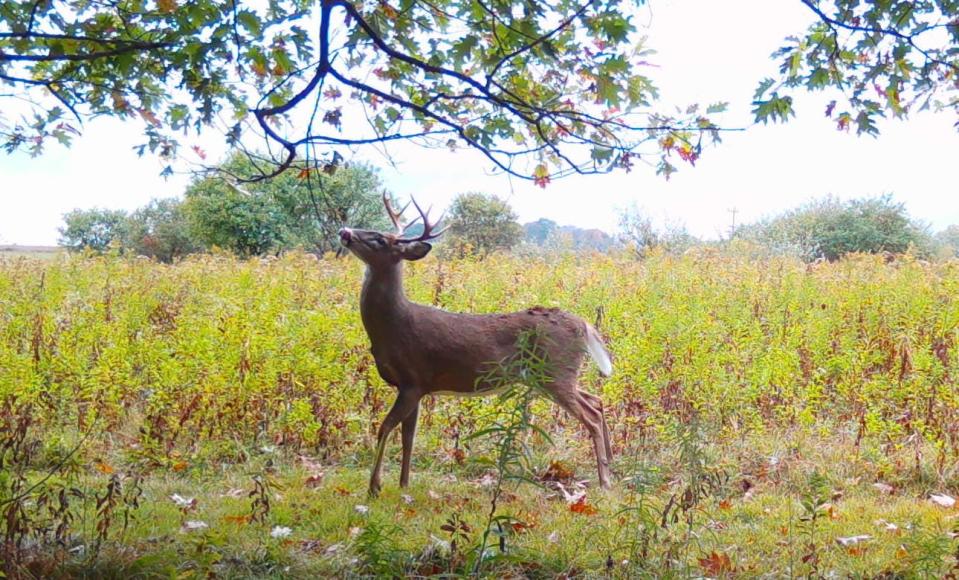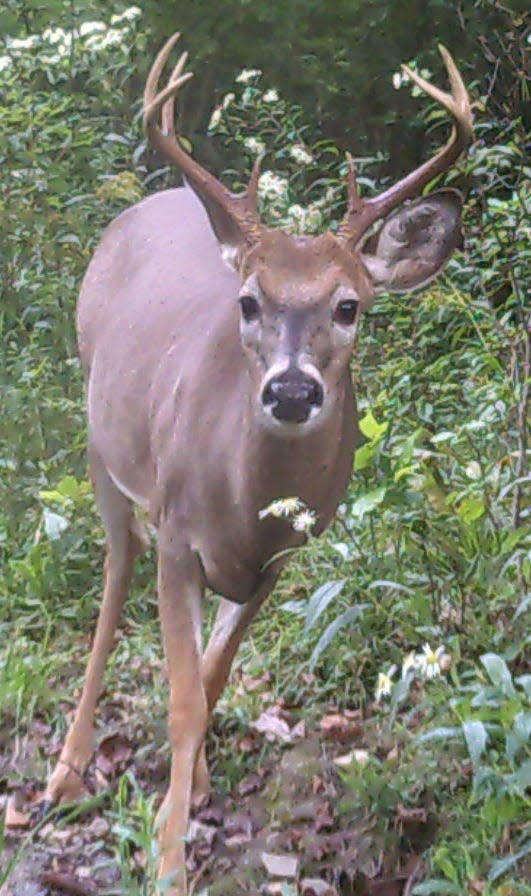Do attractants work? How to make sense of early season deer scents
The big buck strode down through the pine trees in the late afternoon, making a beeline to my stand.
All I could do was watch, hold my breath, and try to keep my knees from knocking as the old eight-pointer would have seen me if made a move to draw my bow.
At 12 yards, almost under me, the bull-necked buck started trashing saplings, raking them with his antlers and pawing the ground, sending clumps of pine needles in every direction.
And all I could do was hope he didn't scent me.
Wait for the right moment to draw.
For what seemed like 20 minutes, the buck carried on like I had never witnessed.
The stand site I was at contained a fresh ground scrape with a significantly chewed and marked overhanging branch.
The ground scrape was large and well defined, perfectly cleared of leaves.
Prior to climbing up in the tree, I had doctored the scrape and the surrounding area with a couple scents I had purchased, one being a glass bottled estrus scent and the other, buck urine in a plastic bottle.
In my mind, there was no doubt that if I had not put the scents there, that buck would not have behaved as it did.
But now, years later when I reflect on the times that deer scents have successfully brought deer into my stand, I have to wonder, "Would the deer, in this case the buck, have come in any way?"

The big eight-pointer never knew I was there. As it walked away my arrow left the bow's riser. The deer only made three bounds before crashing down.
Try as I might, in subsequent years I could not get the combination of scents to repeat the scenario.
Things went wrong as they so often do when deer hunting; the wind was wrong, not the right stage of the rut, the bucks were occupied with other doe and/or bucks, other hunters put the deer on alert, and undoubtedly a lot of other factors that someday we will understand, but are opaque to us now.
But part of bow hunting is the experimenting with scents, trying to break into the whitetail's olfactory world that we can only imagine.
A few years ago I had good luck with another combination of scents, this time on another eight-point buck.
I had my stand set up so that it overlooked a travel corridor, a funnel or a pinch-point between two sets of woods. I had snipped an overhanging branch off a hot scrape on another hill that was close to a house.
More: After Hours Archery aims to help bow hunters stay sharp at new shop in Allegany County
This time, I zip-tied that branch to a small sapling near my stand, making a mock scrape.
From trail camera photos, it’s now evident that both bucks and doe find the overhanging branch nearly irresistible.
So I augmented the site with a pair of buck tarsal glands (dark glands on the back leg).
Up on the adjacent hill I noticed a decent buck moving through a field edge at 100 yards or so. The grunt tube came up and with a loud "grrrrr-UH," turned the buck and slowly walked directly toward my tree, then circling downwind.
Though my heart was racing, the buck wanted to scent-check the scene before bulling in.

When that whitetail caught the scent from the tarsal glands, the eight-pointer took on a totally different air.
It lowered its head, every hair on its back stood out straight, making it appear larger, darker, like it just grew! And it put its ears down, like the left ear at seven o'clock and the right ear at five o'clock. Kind of sideways, the buck moved in directly below my stand, giving me a perfect shot opportunity on that foggy mid-November morning.
The buck jumped a small creek and then went down in the middle of a small field, not 10 seconds after the shot.
But though I have tried to replicate that scenario too, I have not been able to repeat it.
I have a suspicion that many other hunters are also using scents and they may be "wising up" the deer. And in the above case, the combination of the overhanging branch, the tarsals, and the immediate challenge grunts put the buck at ease.
The use of scents during bow season can be effective at times, like in the above two instances, but many more times, they don't work and fail to produce.
Blanket endorsements that say deer scents are "guaranteed" to work are oversold. And the opposite statements, those absolute denials that say scents never work as an attractant, calling them "snake oil" are just as wrong.
But one thing is for sure — the amazing world of the whitetail and its olfactory-based communication system will keep us puzzled, curious, guessing and experimenting.
— Oak Duke writes a weekly column.
This article originally appeared on The Evening Tribune: How early season deer scents, attractants play a role in hunting

